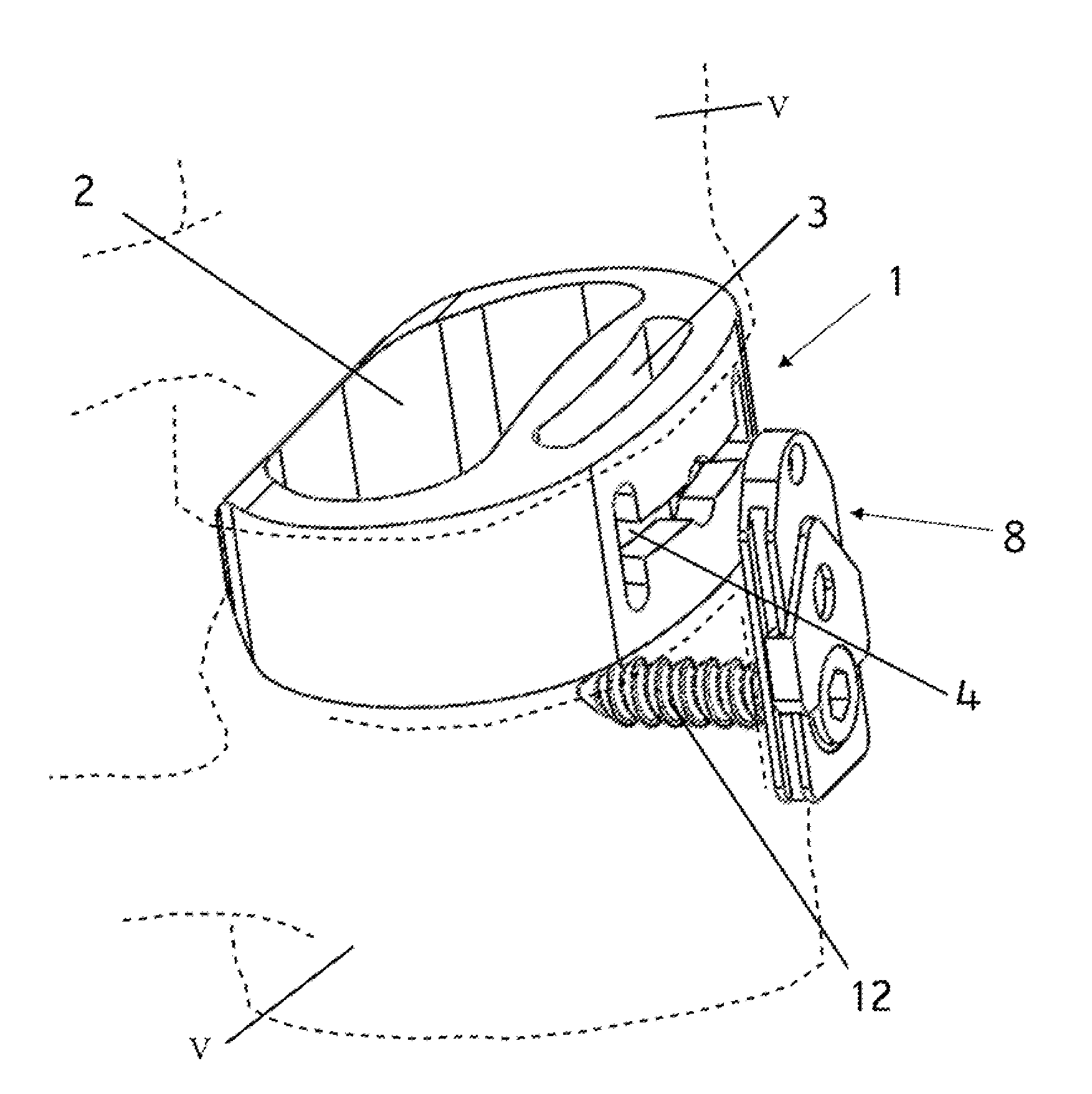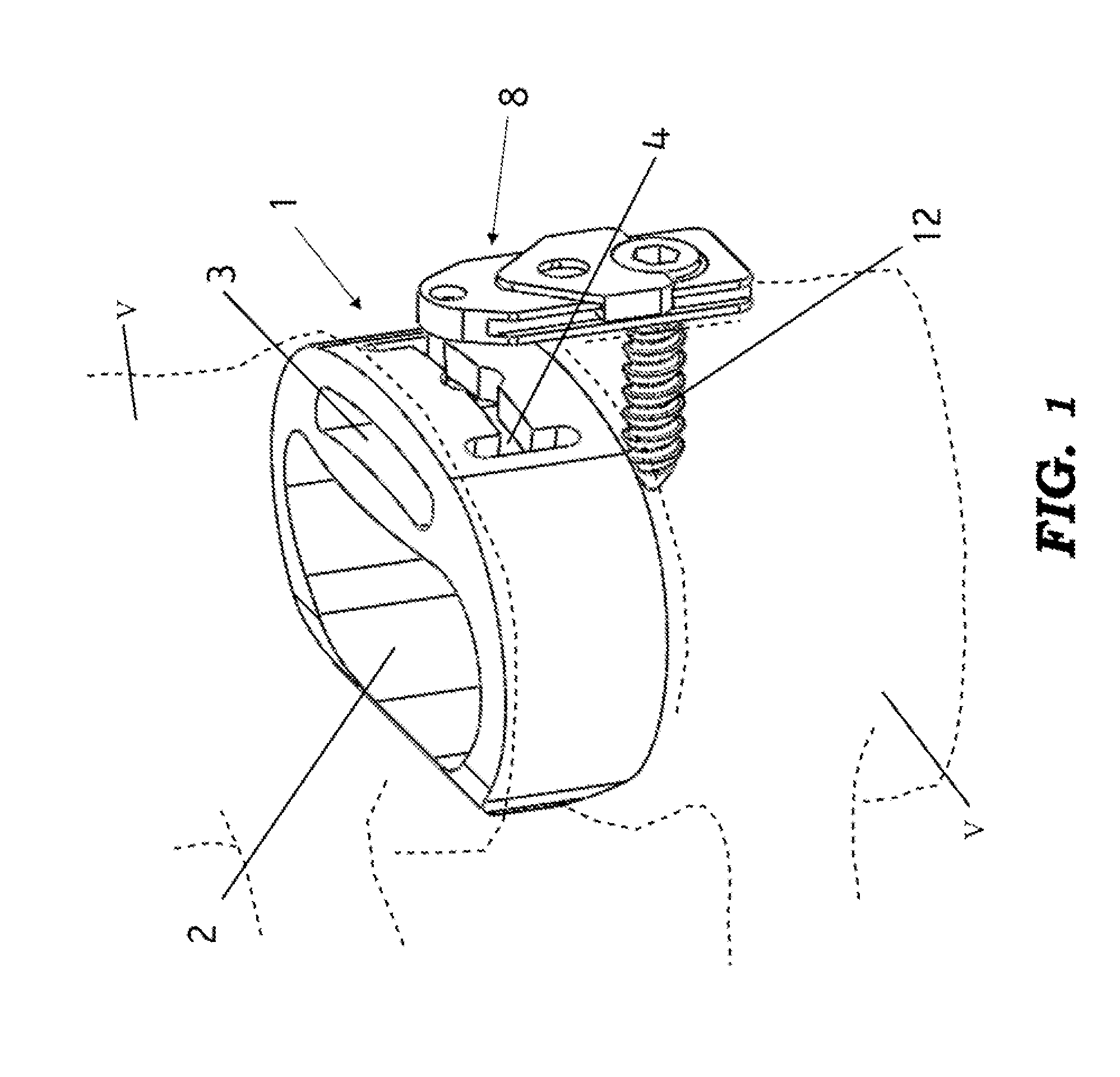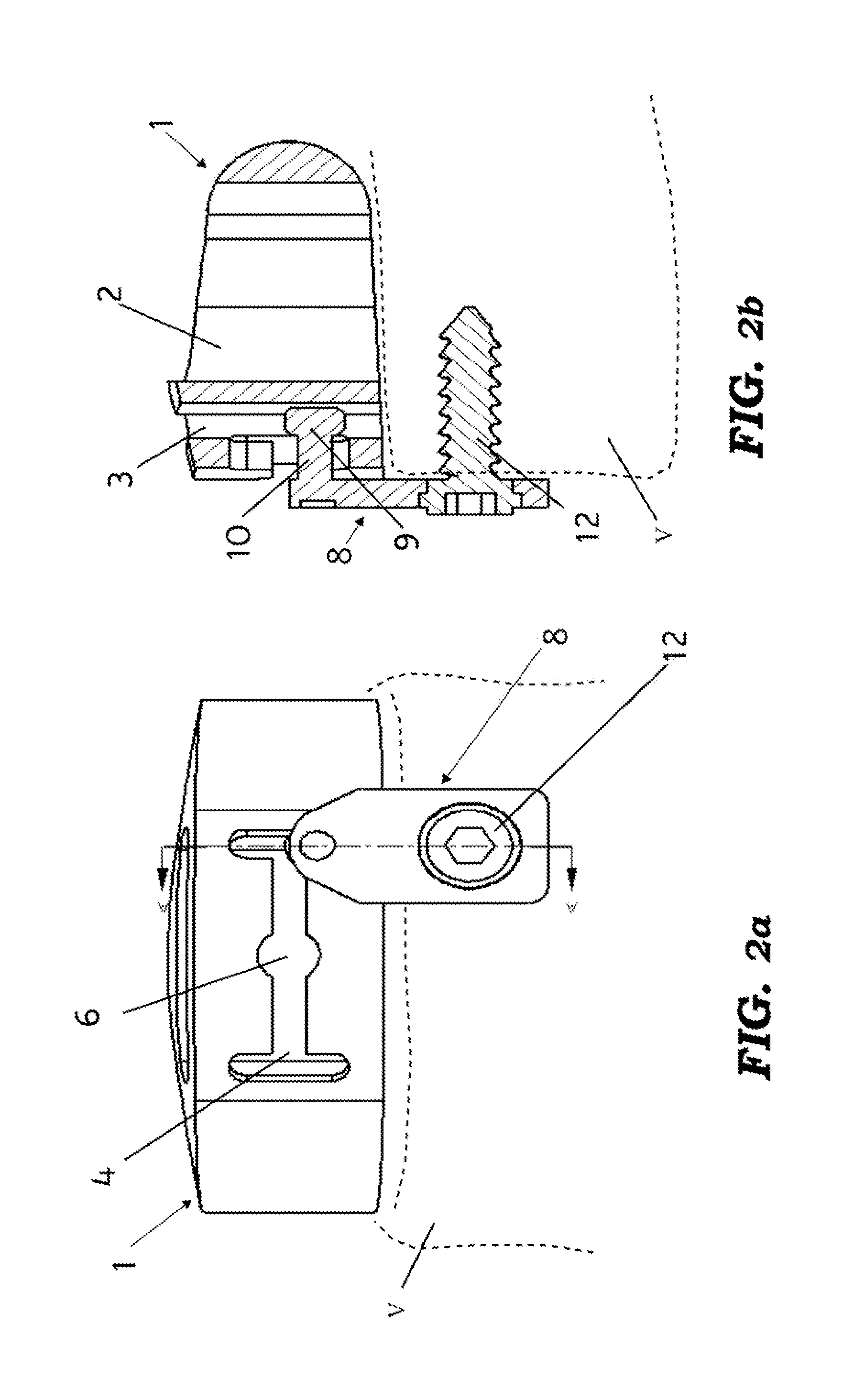Dynamic interbody cage anchor system
a cage anchor and dynamic technology, applied in the field of spinal disorders, can solve the problems of nerve root compression and pain, lack of cohesive strength, and spinal nerve roots, and achieve the effect of promoting bone growth and fusion
- Summary
- Abstract
- Description
- Claims
- Application Information
AI Technical Summary
Benefits of technology
Problems solved by technology
Method used
Image
Examples
Embodiment Construction
[0030]With reference to FIG. 1, an interbody fusion cage 1 having a generally annular box form surrounding a central void 2 is provided. The void 2 extends from the upper surface of the cage to the lower surface and is provided to be packed with natural or synthetic bone graft material in order to promote bone growth and fusion of the superior and inferior vertebra V between which it will be implanted. The fusion cage 1 is preferably constructed of PEEK (Polyether ether ketone) but may be constructed of any suitable, bio-compatible material such as titanium or Polyoxymethylene. It should be noted that while the box form intervertebral cage has been used as a representative interbody spacer, a variety of interbody spacer types including horizontal and vertical cylindrical cages may also utilize the present invention.
[0031]The representative box form cage 1 is provided with a vertical surface that will be oriented to the anterior face of the spine when implanted between the adjacent v...
PUM
 Login to View More
Login to View More Abstract
Description
Claims
Application Information
 Login to View More
Login to View More - R&D
- Intellectual Property
- Life Sciences
- Materials
- Tech Scout
- Unparalleled Data Quality
- Higher Quality Content
- 60% Fewer Hallucinations
Browse by: Latest US Patents, China's latest patents, Technical Efficacy Thesaurus, Application Domain, Technology Topic, Popular Technical Reports.
© 2025 PatSnap. All rights reserved.Legal|Privacy policy|Modern Slavery Act Transparency Statement|Sitemap|About US| Contact US: help@patsnap.com



